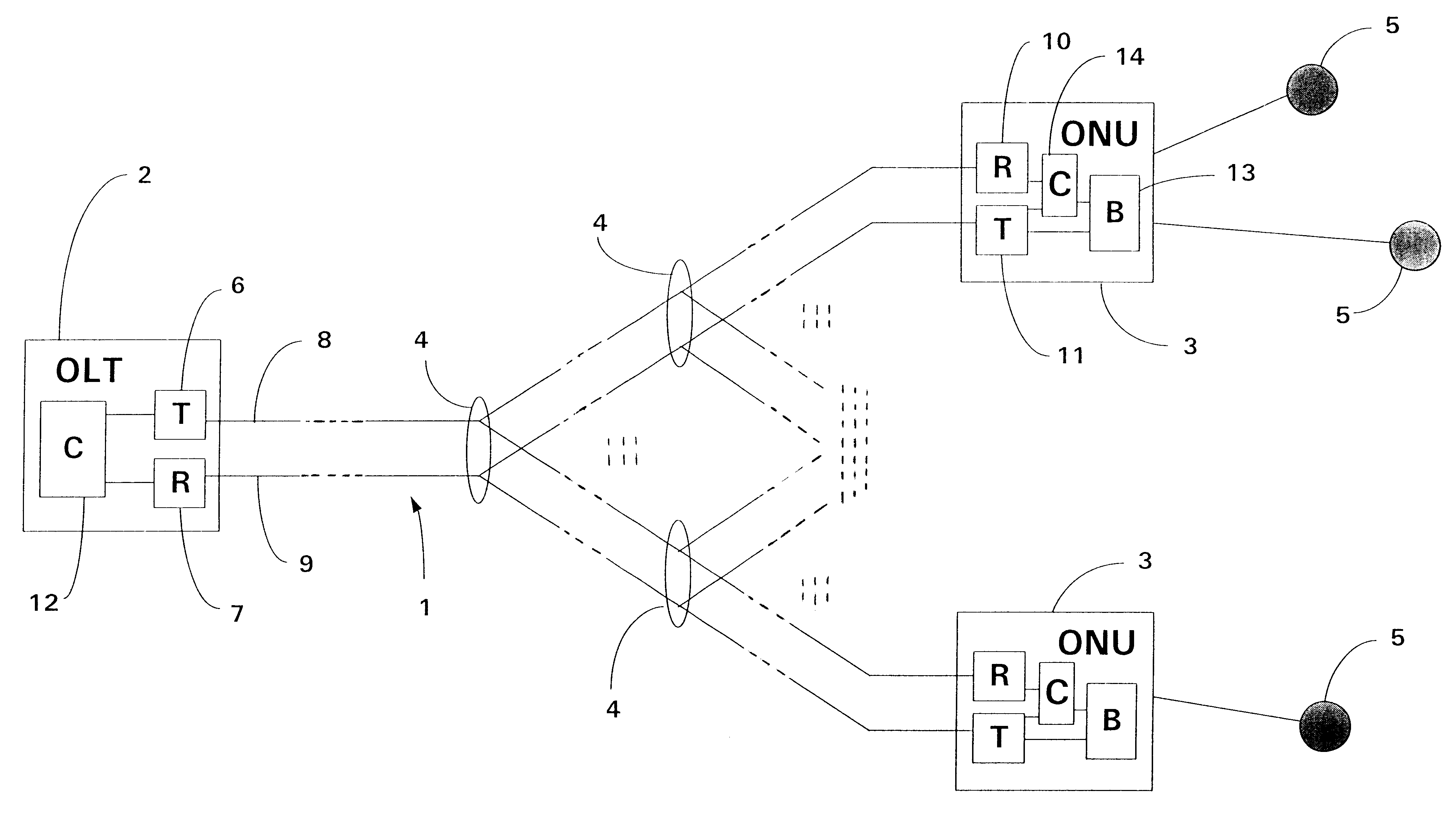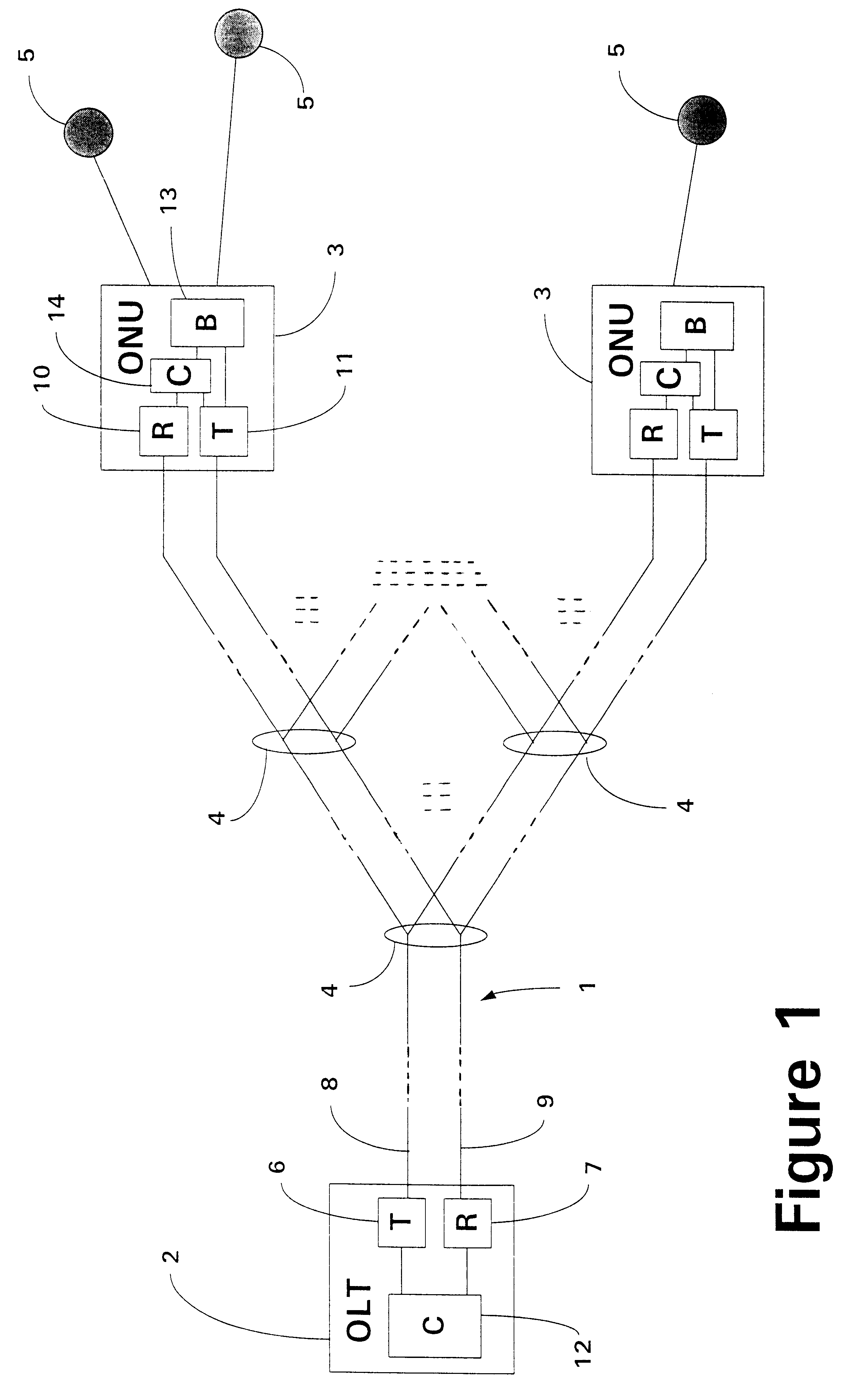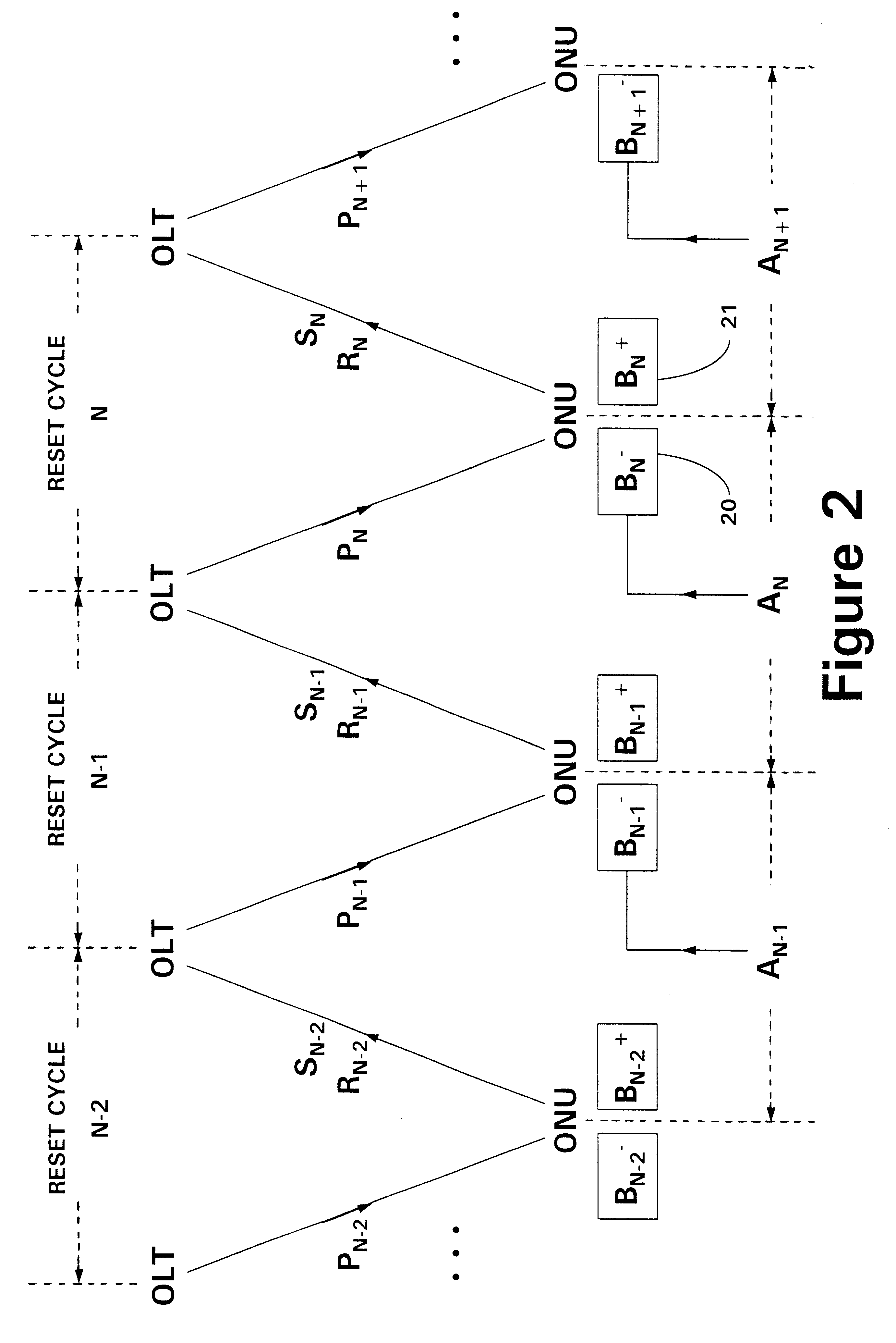Communications network
a communication network and network technology, applied in the field of communication networks, can solve problems such as packet delay
- Summary
- Abstract
- Description
- Claims
- Application Information
AI Technical Summary
Benefits of technology
Problems solved by technology
Method used
Image
Examples
Embodiment Construction
Embodiments of the invention will now be described in more detail, by way of example only, with reference to the accompanying drawings in which:
FIG. 1 shows the configuration of a typical known local access PON;
FIG. 2 shows the parameters of a polling sequence used in preferred embodiments of the invention;
Referring to FIG. 1, a section of a typical known local access PON having a "star" configuration is shown, including an optical waveguide 1, an optical line termination unit (OLT) 2 connected to the "head-end" of the optical waveguide 1, a number of optical network units (ONUs) 3, each connected to the end of a branch--a "user end"--split from the waveguide 1 by one or more passive optical splitters 4, two levels of split being shown in FIG. 1. ONUs 3 provide an interface to the PON for user equipment 5, connected to ONUs 3 typically by non-optical connection means. The OLT 2 includes an optical transmitter 6 and an optical receiver 7, each connected to the optical waveguide 1. Th...
PUM
 Login to View More
Login to View More Abstract
Description
Claims
Application Information
 Login to View More
Login to View More - R&D
- Intellectual Property
- Life Sciences
- Materials
- Tech Scout
- Unparalleled Data Quality
- Higher Quality Content
- 60% Fewer Hallucinations
Browse by: Latest US Patents, China's latest patents, Technical Efficacy Thesaurus, Application Domain, Technology Topic, Popular Technical Reports.
© 2025 PatSnap. All rights reserved.Legal|Privacy policy|Modern Slavery Act Transparency Statement|Sitemap|About US| Contact US: help@patsnap.com



